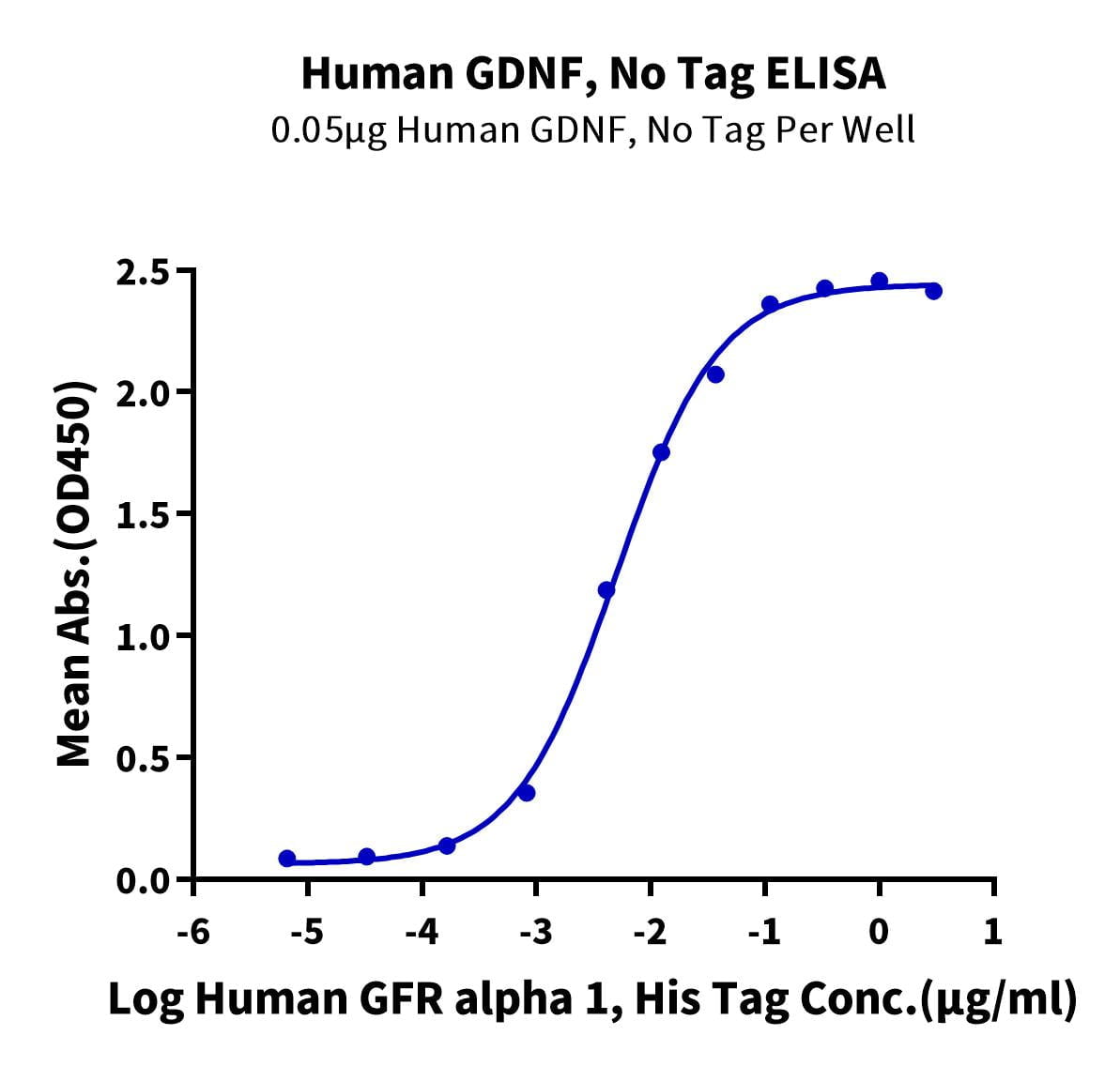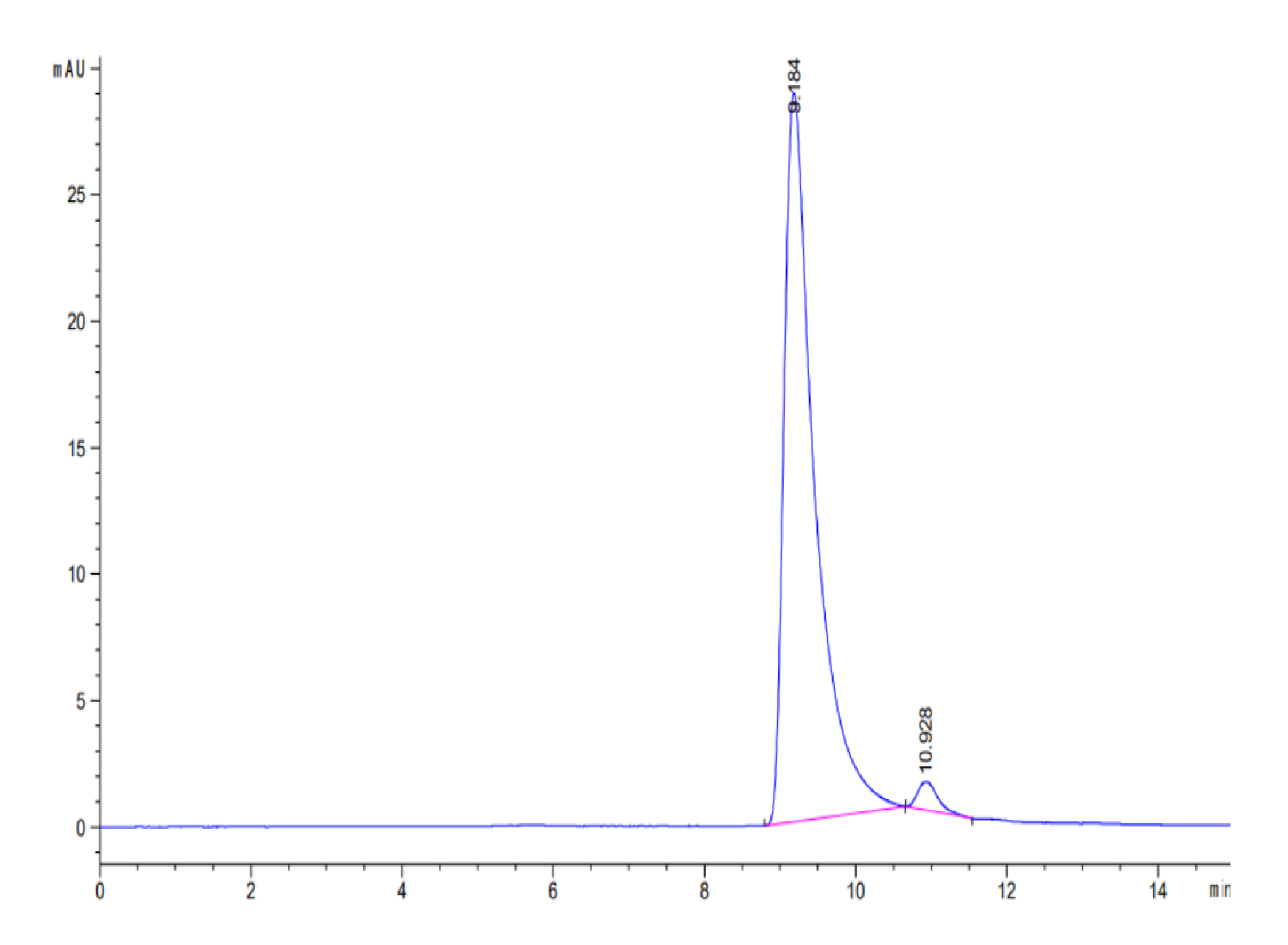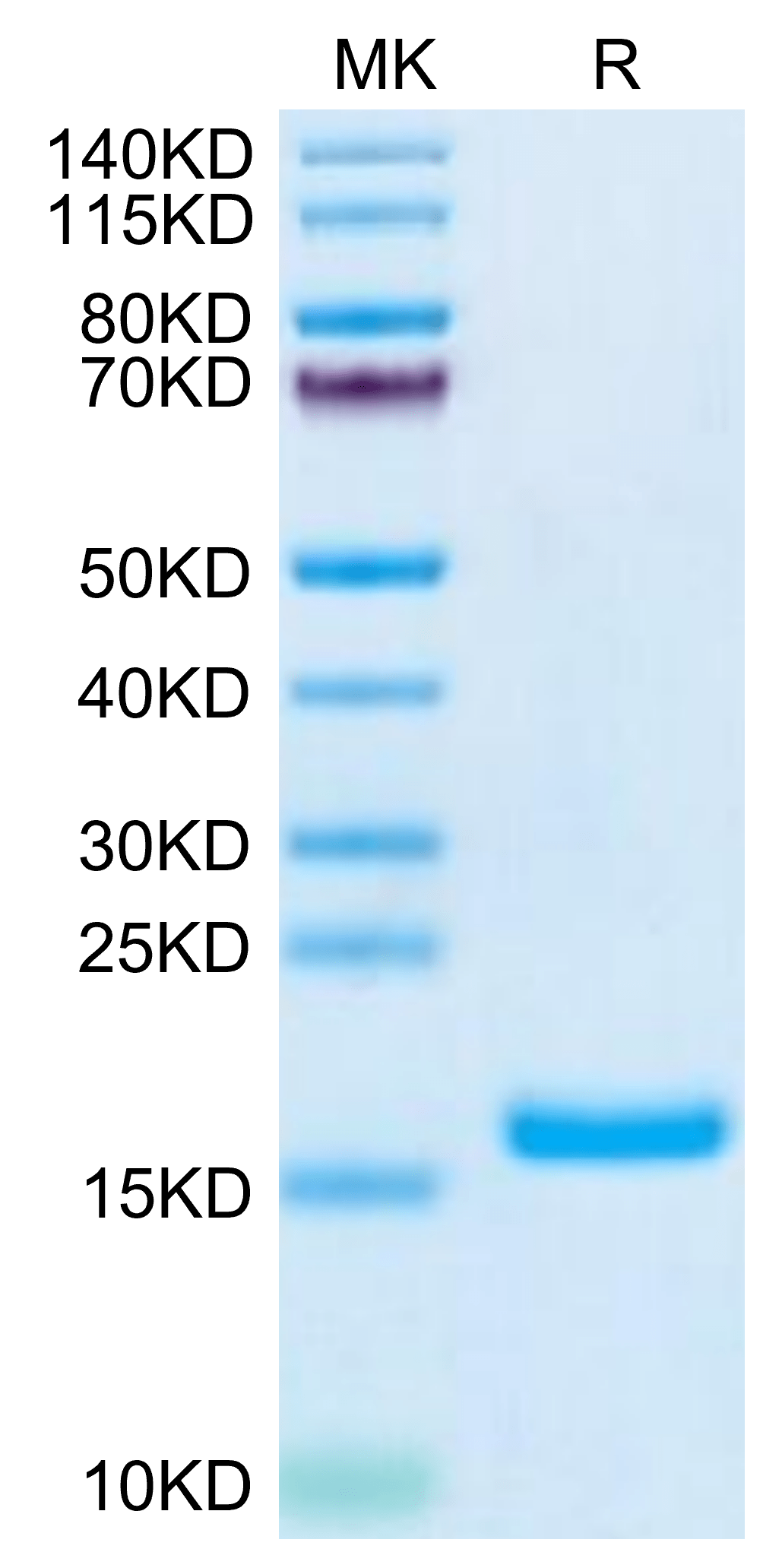| Weight | 1 lbs |
|---|---|
| Dimensions | 9 × 5 × 2 in |
| accession | P39905 |
| express system | E.coli |
| product tag | No Tag |
| purity | > 95% as determined by Tris-Bis PAGE;> 95% as determined by HPLC |
| background | Glial cell line-derived neurotrophic factor (GDNF) is a 134 amino acid protein belonging in the GDNF family ligands (GFLs). GDNF was originally isolated from rat glial cell lines and identified as a neurotrophic factor with the ability to promote dopamine uptake within midbrain dopaminergic neurons. |
| molecular weight | The protein has a predicted MW of 15.06 kDa same as Tris-Bis PAGE result. |
| available size | 100 µg, 500 µg |
| endotoxin | Less than 0.1 EU per μg by the LAL method. |
Human GDNF Protein 2847
$345.00 – $1,150.00
Summary
- Expression: E.coli
- Functional: Yes (ELISA)
- Amino Acid Range: Ser78-Ile211
Human GDNF Protein 2847
| protein |
|---|
| Size and concentration 100, 500µg and lyophilized |
| Form Lyophilized |
| Storage Instructions Valid for 12 months from date of receipt when stored at -80°C. Recommend to aliquot the protein into smaller quantities for optimal storage. Please minimize freeze-thaw cycles. |
| Storage buffer Shipped at ambient temperature. |
| Purity > 95% as determined by Tris-Bis PAGE |
| target relevance |
|---|
| Glial cell line-derived neurotrophic factor (GDNF) is a 134 amino acid protein belonging in the GDNF family ligands (GFLs). GDNF was originally isolated from rat glial cell lines and identified as a neurotrophic factor with the ability to promote dopamine uptake within midbrain dopaminergic neurons. |
| Protein names Glial cell line-derived neurotrophic factor (hGDNF) (Astrocyte-derived trophic factor) (ATF) |
| Gene names GDNF,GDNF |
| Protein family TGF-beta family, GDNF subfamily |
| Mass 9606Da |
| Function Neurotrophic factor that enhances survival and morphological differentiation of dopaminergic neurons and increases their high-affinity dopamine uptake (PubMed:8493557). Acts by binding to its coreceptor, GFRA1, leading to autophosphorylation and activation of the RET receptor (PubMed:10829012, PubMed:25242331, PubMed:31535977). Involved in the development of the neural crest (PubMed:15242795). |
| Catalytic activity #N/A |
| Subellular location Secreted . |
| Tissues In the brain, predominantly expressed in the striatum with highest levels in the caudate and lowest in the putamen. Isoform 2 is absent from most tissues except for low levels in intestine and kidney. Highest expression of isoform 3 is found in pancreatic islets. Isoform 5 is expressed at very low levels in putamen, nucleus accumbens, prefrontal cortex, amygdala, hypothalamus and intestine. Isoform 3 is up-regulated in the middle temporal gyrus of Alzheimer disease patients while isoform 2 shows no change. |
| Structure Homodimer; disulfide-linked (PubMed:19478429, PubMed:25242331, PubMed:31535977, PubMed:8493557, PubMed:8988018). Interacts with GFRA1 coreceptor and RET: forms a 2:2:2 ternary complex composed of GDNF ligand, GFRA1 and RET receptor (PubMed:21994944, PubMed:25242331, PubMed:31535977). Interacts (via propeptide) with SORL1 (via N-terminal ectodomain); this interaction affects GDNF-regulated, but not constitutive secretion (PubMed:15364913, PubMed:21994944, PubMed:23333276). Also interacts with SORL1 in complex with GFRA1; this interaction leads to GDNF endocytosis and lysosomal degradation (PubMed:23333276). |
| Target Relevance information above includes information from UniProt accession: P39905 |
| The UniProt Consortium |
Data
Publications
Publications
| pmid | title | authors | citation |
|---|---|---|---|
| We haven't added any publications to our database yet. | |||
Protocols
| relevant to this product |
|---|
Documents
| # | ||
|---|---|---|
| Please enter your product and batch number here to retrieve product datasheet, SDS, and QC information. | ||

















